elliptical_cylinder
Form factor for an elliptical cylinder.
| Parameter | Description | Units | Default value |
|---|---|---|---|
| scale | Source intensity | None | 1 |
| background | Source background | cm-1 | 0.001 |
| radius_minor | Ellipse minor radius | Å | 20 |
| axis_ratio | Ratio of major radius over minor radius | None | 1.5 |
| length | Length of the cylinder | Å | 400 |
| sld | Cylinder scattering length density | 10-6Å-2 | 4 |
| sld_solvent | Solvent scattering length density | 10-6Å-2 | 1 |
| theta | In plane angle | degree | 90 |
| phi | Out of plane angle | degree | 0 |
| psi | Major axis angle relative to Q | degree | 0 |
The returned value is scaled to units of cm-1 sr-1, absolute scale.
Definition for 2D (orientated system)
The angles \(\theta\) and \(\phi\) define the orientation of the axis of the cylinder. The angle \(\Psi\) is defined as the orientation of the major axis of the ellipse with respect to the vector \(Q\). A gaussian polydispersity can be added to any of the orientation angles, and also for the minor radius and the ratio of the ellipse radii.
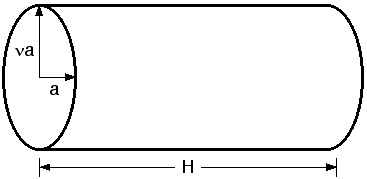
Fig. 19 Elliptical cylinder geometry \(a = r_\text{minor}\) and \(\nu = r_\text{major} / r_\text{minor}\) is the axis_ratio.
The function calculated is
with the functions
where
and the angle \(\psi\) is defined as the orientation of the major axis of the ellipse with respect to the vector \(\vec q\). The angle \(\alpha\) is the angle between the axis of the cylinder and \(\vec q\).
Definition for 1D (no preferred orientation)
The form factor is averaged over all possible orientation before normalized by the particle volume
To provide easy access to the orientation of the elliptical cylinder, we define the axis of the cylinder using two angles \(\theta\), \(\phi\) and \(\Psi\) (see cylinder orientation). The angle \(\Psi\) is the rotational angle around its own long_c axis against the \(q\) plane. For example, \(\Psi = 0\) when the \(r_\text{minor}\) axis is parallel to the \(x\) axis of the detector.
All angle parameters are valid and given only for 2D calculation; ie, an oriented system.
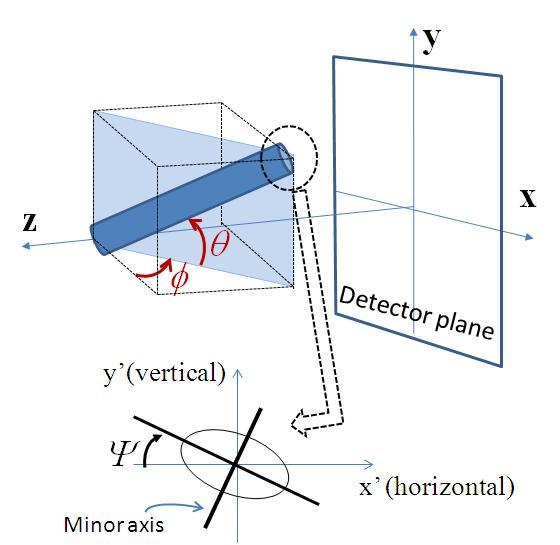
Fig. 20 Definition of angles for 2D
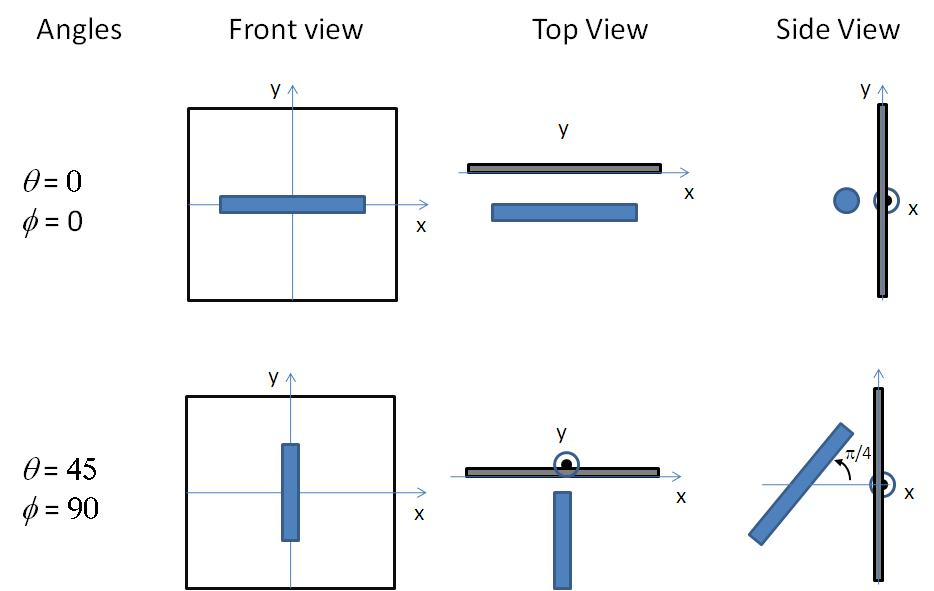
Fig. 21 Examples of the angles for oriented elliptical cylinders against the detector plane.
NB: The 2nd virial coefficient of the cylinder is calculated based on the averaged radius \((=\sqrt{r_\text{minor}^2 * \text{axis ratio}})\) and length values, and used as the effective radius for \(S(Q)\) when \(P(Q)*S(Q)\) is applied.
Validation
Validation of our code was done by comparing the output of the 1D calculation to the angular average of the output of the 2D calculation over all possible angles.
In the 2D average, more binning in the angle \(\phi\) is necessary to get the proper result. The following figure shows the results of the averaging by varying the number of angular bins.
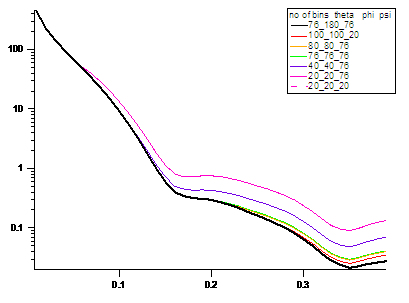
Fig. 22 The intensities averaged from 2D over different numbers of bins and angles.
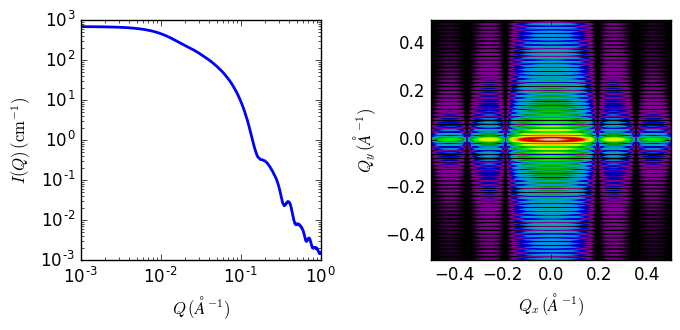
Fig. 23 1D and 2D plots corresponding to the default parameters of the model.
References
L A Feigin and D I Svergun, Structure Analysis by Small-Angle X-Ray and Neutron Scattering, Plenum, New York, (1987) [see table 3.4]
Authorship and Verification
- Author:
- Last Modified by:
- Last Reviewed by: Richard Heenan - corrected equation in docs Date: December 21, 2016